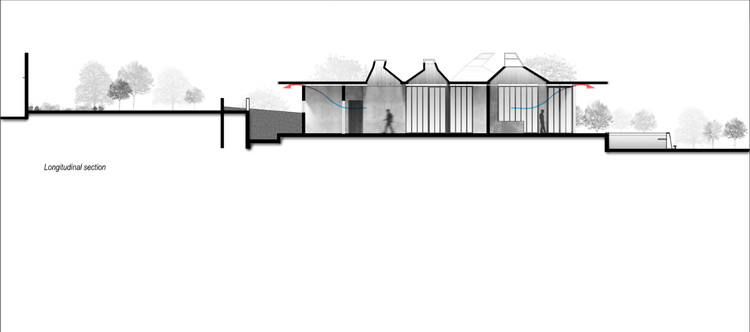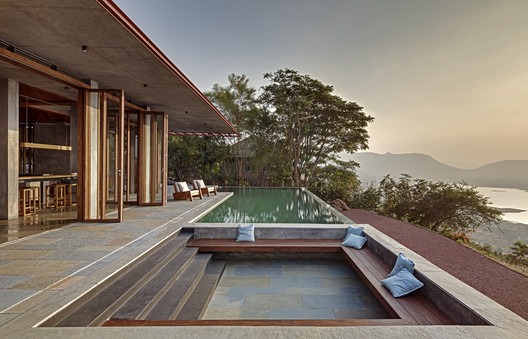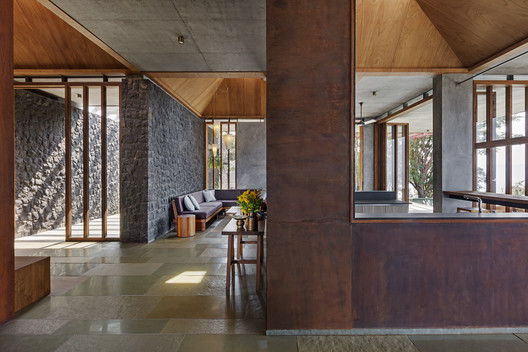
-
Architects: Khosla Associates
- Year: 2017
-
Photographs:Shamanth Patil J

Text description provided by the architects. Our picturesque site is located in the Western Ghats perched on the backwaters of a lake and surrounded by the Sahyadri mountain ranges.



Although they owned two acres of land, our client’s requirements were modest. They asked us to build a 2100 sft single level pavilion as a retreat to escape the frenetic pace of Mumbai life and to reinvigorate the senses.

We envisioned a single level pavilion spatially subdivided onto two primary zones; one for engagement with the view during the day and the other as a quiet retreat at night. The living spaces are extroverted and permeable allowing nature to penetrate its envelope; the private spaces are introverted and protected.


One of the challenges of the pavilion was to admit the right quality of natural light not only from the periphery but also into its internal volumes. To this end, we created a series of dramatic skylights to illuminate the internal spaces evenly. The angular shapes of the skylights were inspired by the looming profiles of the mountain peaks to the east and west of the house. Each of the skylights admits a soft quality of north light into the Living, kitchen, foyer, and bathrooms

The architecture is built from the readily available local black basalt stone which was found on the site just 5 to 6 feet below ground. The stone is of volcanic origin and available in abundance across the Deccan Plateau. We used the stone as a random dry pack cladding along the entire extent of the exterior walls and on a few internal accent walls.

The contoured land allowed us to work with the natural topography of the site. Rather than creating a split-level house to negotiate the slope, we created a retaining wall enclosure and a ramp alongside it to arrive at the entrance 3’-6” below.

We had to exercise a great deal of restraint in the furniture and accessories, choosing to customize each piece to be in harmony with the architectural intent. Accessories were all sourced from Maharashtra, brass and copper vessels from Nasik and Bidriware from Aurangabad.

The primary objective of the house was to absorb the natural environment,to open itself up to the view.But in doing so we had to remain cognizantof the physical presence and the environmental impact of our architecture on the hill.

Originally published on May 31, 2017.





















